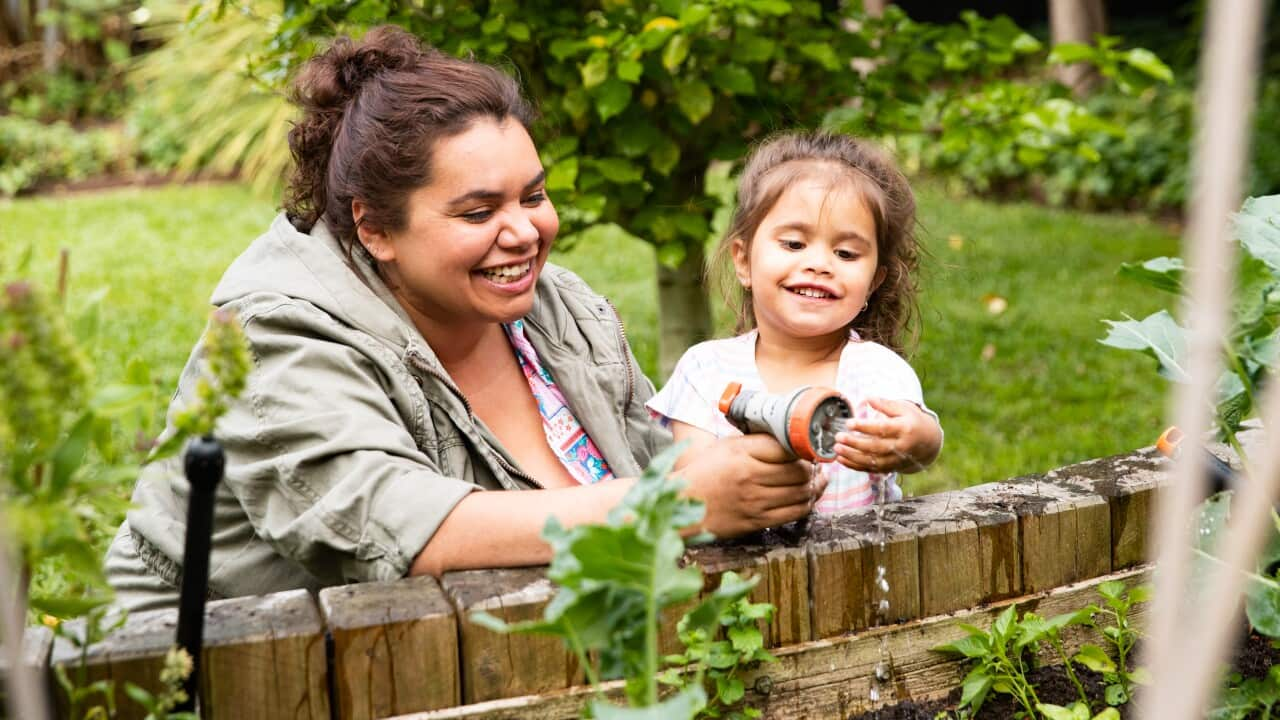Key Points
- Woven objects are a tangible link between the weaver, country and ancestors.
- Weaving is used as a mindfulness tool and for social connection.
- Weavers can have a signature style which identifies their work.
- Both men and women weave.
Woven objects are as diverse as the First Nations weavers that create them. Each work is an object of significance that forms a visible tie between the weaver, country and their ancestors.
The weaving begins by gathering and preparing local resources such as reeds, bark and plants. These are woven to form a pattern to create intricate objects like baskets, bowls, rope and nets.
“Weaving is just one word in English. In first mother tongue language there are lots of different words for it,” Cherie Johnson says. She is a Gomeroi woman, artist and educator from Northern NSW.
“The really significant bit about what we call weaving is the cultural knowledge that's held in the objects – knowing what plants to pick, what time of year, and also what's available for harvest to eat in a really sustainable way.”

ADELAIDE, AUSTRALIA: An Indigenous weaving workshop takes place in The Precinct Village an AFLW match. Credit: Kelly Barnes/AFL Photos/via Getty Images
Weaving connects people
Weaving is not just about learning the stitches and the process.
Different generations sit together to share stories and learn the cultural knowledge behind why people weave.
“The importance is actually understanding what you wove with, why those items were significant, what the object that you're making was used for, how to use it correctly. There's so much involved in it,” Ms Johnson says.
Yes – men weave too
Luke Russell is a Worimi Custodian in the Newcastle area of NSW. His practice involves learning and passing on the tool-making knowledge of his Elders through the construction of traditional bark canoes, fishing spears and other tools.
For me, weaving, predominantly rope weaving, plays a big part, especially with our men's tools.Luke Russell, Cultural Knowledge Holder
He uses sophisticated weaving techniques to secure his canoes' ends or bind tools with woven rope.
From early childhood to teenage years, boys traditionally spent time with their matriarchal hierarchy and learned to weave alongside girls.
“For a young man, especially who was getting taught to progress from, we'd say, a boy to a man, is when he would have to utilise all those skills,” Mr Russell says. “And all the skills that he would have learned up until that point were taught by women.”

Credit: Richard I'Anson/Getty Images
Weaving as a moving meditation
Cherie Johnson uses weaving to diarise her thoughts visually. She practices mindfulness by weaving with intent and pouring her thoughts into the object.
“That’s how our community would process things,” she says.
“We would process them together in love, and in a really respectful way as a family, and that's what weaving does. It brings people together to sit, to yarn. Sometimes in our weaving circles people just come to drink tea, to be around other sisters.”
Stylistic differences
Plant resources such as grasses and barks differ across the country, so weaving differs stylistically from region to region.
But the weavers bring their own flair and signature style to their work.
One way is to use local pigments from flowers, barks, saps or roots.
“An artist purposefully using the pigment to colour the woven fibre is really significant for that person, for that area,” Cherie Johnson says.
Typically somebody with a trained eye can pick the region and sometimes even the artist based on the pigment, the style, the stitch and the materials.Cherie Johnson, artist and educator
Sometimes, you can identify the artist by looking at the base of the weaving.
Artist Nephi Denham is a Girramay Traditional Owner from the Cardwell area in North Queensland. His uncle taught him to weave.
“Many of our artists including myself, we start [the weaving] off differently,” Mr Denham says.
“That's how you can tell from the base of it whether it's left or right-hand weaving. So you can really tell who's made what.”

Credit: Richard I'Anson/Getty Images
Can we get involved?
Cassie Leatham is a multidisciplinary artist and master weaver from the Taungurung people of the Kulin nation in Victoria. She facilitates First Nations-led workshops that are open to non-Indigenous people.
Participants are urged to listen deeply to promote a greater understanding of where First Nations weavers come from and the connection to their ancestors.
“It’s important that they know these workshops should be First Nations-led, and they should take away the importance of cultural intellectual property of our knowledge here in Australia,” Ms Leatham says.
It’s about respecting protocol. We can all share what we’ve learnt, but we shouldn’t profit from it – and we must always acknowledge our First Nations teachers.
You can find First Nations-led weaving communities and weaving festivals that are open to everyone. Workshops are often promoted through local councils, on social media and by word of mouth.
Mainstream visibility
Weavings are exhibited and sold in both major and small galleries across Australia as commissioned works in private and public spaces and even on fashion runways.
It’s important that galleries showcase the diversity of First Nations cultures and environments.
“The mainstream with weaving is actually a visual insight into the past, which is now the present, and all of us weavers are continuing for our future generations,” Cassie Laetham says.
“So when people go into galleries, people do need to realise that our weaving is Australia-wide, and everyone has a culturally significant story with the weaving or fibres. It's not all the same.”









